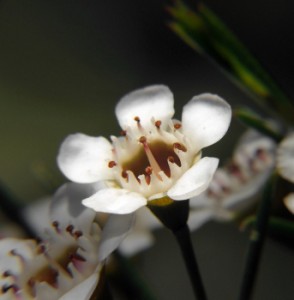Waxflower
The waxflower is a shrub more commonly known as the Geraldton wax. This is in honour of the Australian town of Geraldton, where it is thought to originate. The Latin name for the plant is chamelaucium uncinatum, with the word uncinatum coming from the Latin for hooked. It is called this because of the tip of the leaves appear to hook over themselves when growing.
Description
The plant is an upright shrub which can grow as high as four metres. During the summer and autumn, it displays small round petal flowers. Waxflower blooms with pink, purple white or red flowers and as such is a very popular choice for cut flowers. It also has a sweet almond and lemon fragrance, which is another reason why it is so popular as a cut-flower choice.
Habitat
Waxflower is indigenous to Western Australia, where it enjoys a warm, dry climate. It is a fairly hardy plant and although it can live in subtropical environments, high humidity levels will harm it.
Availability
As cut flowers, waxflower is available from November to April. Propagation is not easy with seeds but with firm cuttings it can be achievable. There are a number of varieties of waxflower available, depending on your colour preference.
Species
The waxflower is a member of the genus, chamelaucium. It is in the myrtaceae family, along with many other tropical plants such as eucalyptus and clove.
Care Tips
Stems need to be cut with secateurs as they are quite thick and woody. As a plant it lives well outside in pots, but sometimes needs support to stay upright. The cut flowers will last between eight and ten days in a vase, although the water should be changed every two or three days.
Did You Know?
The genus was first defined by French botanist René Louiche Desfontaines in 1819, and is related to leptospermum, eucalyptus and myrtle.
References
http://anpsa.org.au/c-uncin.html
http://www.types-of-flowers.org/waxflower.html



